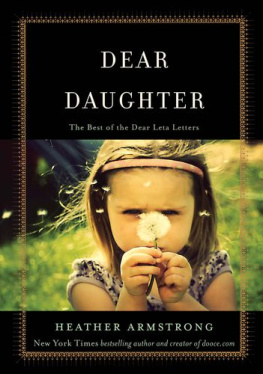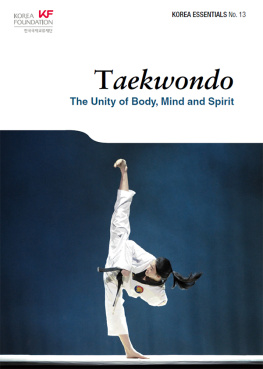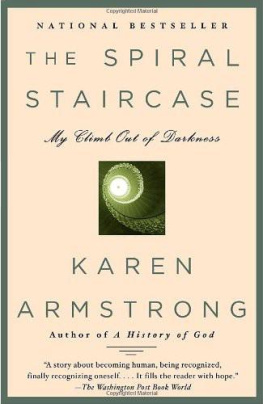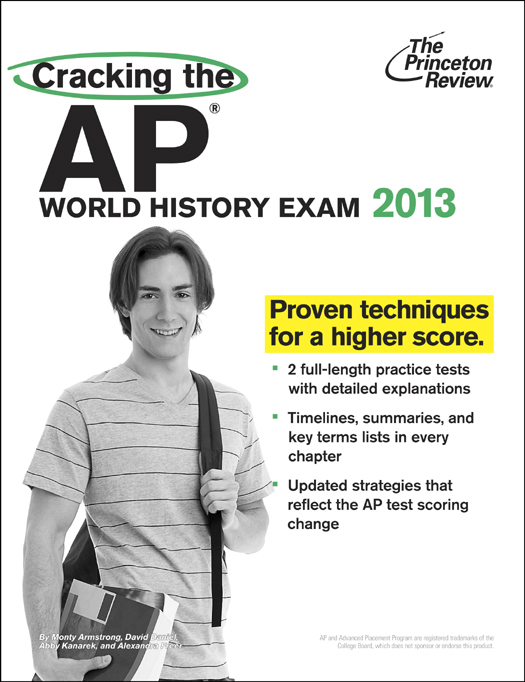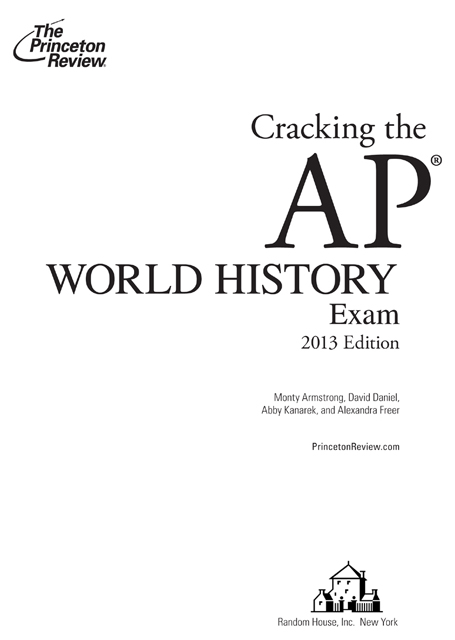
Editorial
Robert Franek, Senior VP, Publisher
Laura Braswell, Senior Editor
Selena Coppock, Senior Editor
Calvin Cato, Editor
Meave Shelton, Editor
Production
Michael Pavese, Publishing Director
Kathy Carter, Project Editor
Michelle Krapf, Editor
Michael Mazzei, Editor
Michael Breslosky, Associate Editor
Stephanie Tantum, Associate Editor
Kristen Harding, Associate Editor
Vince Bonavoglia, Artist
Danielle Joyce, Graphic Designer
Random House Publishing Team
Tom Russell, Publisher
Nicole Benhabib, Publishing Director
Ellen L. Reed, Production Manager
Alison Stoltzfus, Managing Editor
The Princeton Review, Inc.
111 Speen Street
Suite 550
Framingham, MA 01701
E-mail:
Copyright 2012 by The Princeton Review, Inc.
Cover art Jonathan Pozniak
All rights reserved. Published in the United States by Random House, Inc., New York, and in Canada by Random House of Canada Limited, Toronto.
eISBN: 978-0-307-94445-0
AP and Advanced Placement Program are registered trademarks of the College Board, which does not sponsor or endorse this product.
The Princeton Review is not affiliated with Princeton University.
Editor: Liz Rutzel
Production Editor: Michael Mazzei
Production Coordinator: Deborah A. Silvestrini
2013 Edition
v3.1
ACKNOWLEDGMENTS
First to my wife, Sharon, for all her support. To Jerry Bentley and Howard Spodek, whose texts provided an initial framework. To Ellen Mendlow and Alex Freer, who helped a first-time author chart the rough waters. And last, to all my students, who keep me coming back to the classroom. M.A.
I would like to thank my husband, Paul, and son, Jordan, for being patient and understanding and enduring innumerable pizza dinners while I worked on this book. Id also like to thank Monty Armstrong, David Daniel, and the editors for all of their help and encouragement. Because this book covers an extremely broad discipline, they each gave me positive feedback and improved the portions of this book that I authored. A.K.
Thank you to Claudia Milne for her valuable additions and updates.
Special thanks to Cynthia Cowan for her work on this edition.
CONTENTS
Introduction
WHAT IS THE PRINCETON REVIEW?
The Princeton Review is an international test-preparation company with branches in all major U.S. cities and several cities abroad. In 1981, John Katzman started teaching an SAT prep course in his parents living room. Within five years, The Princeton Review had become the largest SAT prep program in the country.
Our phenomenal success in improving students scores on standardized tests is due to a simple, innovative, and radically effective philosophy: Study the test, not just what the test claims to test. This approach has led to the development of techniques for taking standardized tests based on the principles the test writers themselves use to write the tests.
The Princeton Review has found that its methods work not just for cracking the SAT, but for any standardized test. Weve already successfully applied our system to the GMAT, LSAT, MCAT, and GRE, to name just a few. Obviously you need to be well versed in world history to do well on the AP World History Exam, but you should remember that any standardized test is partly a measure of your ability to think like the people who write standardized tests. This book will help youbrush up on your AP World History and prepare for the exam using our time-tested principle: Crack the system by learning how the test is created.
We also offer books and online services that cover an enormous variety of education and career-related topics. If youre interested, check out our website at PrincetonReview.com.
PART I
How to Crack
the System
Welcome to the World of AP World History
So you want to take the Advanced Placement World History Exam. Presumably you are taking an AP World History course that is teaching you college-level world history. Assuming you have a good teacher and a good textbook, you probably know a ton of stuff already about whats happened in the world for the last several thousand years. So why do you need another book to teach you how to take the AP World History Exam?
First, if you want to do well on the AP World History Exam, you either need to know everything that ever happened in the world or you can learn what parts of world history are tested on the AP World History Exam. Because learning everything that ever happened in the world is unlikely, weve opted to give you a topical review of World History la Advanced Placement.
B UT W AIT , T HERES M ORE
Second, there is more to scoring highly on a standardized test like the AP World History Exam than simply reviewing all the history that will appear in the test. How often have you gotten questions wrong on a test even though you knew your stuff? To do well on the AP World History Exam or any AP exam, you need to know not only what is tested but also how it is tested. How many multiple-choice questions are there, and what periods do they cover? What kindsof essays are on the test and how much time should you spend on each question? Once you know the answers to questions like these, you will be better able to show what you know on the test. For example, you are given two hours to write three essays. How much time should you spend on each essay? Which essay should you write first? How much time should you spend planning your essay versus actually writing your essay? The answers to these questions, as well as strategies for scoring your personalbest, are what of this book is all about.
D O I T B EFORE Y OU D O I T
Finally, you need to practice. Doing some trial runswriting AP-style essays, answering AP-type multiple-choice questionsis one of the best ways to get yourself ready for the AP World History Exam. Think about it: If you are a tennis player, you attend practice every day. You practice serving, you practice your backhand, and you play some matches against other teammates. Doing this type of practice helps you become as prepared as you can possibly be for a realmatch. This same type of practicedrilling each skill plus taking some full-length practice testswill help you be as prepared as you can possibly be for the AP World History Exam.
B AD C OURSE ? N O C OURSE ?
Taking an AP World History course with a less-than-stellar teacher? Just decided that you must take the AP World History Exam even though you are not taking the course? Home schooling in world history without a course book or outline? No problem. of this book will provide you with a thorough outline of the history you need to know plus guidelines for what you can do to further bolster your AP WorldHistory knowledge.
THE AP WORLD HISTORY EXAM
S TRUCTURE OF THE T EST
The AP World History Exam is divided into two sections: multiple choice and free-response essays. Section I of the test is comprised of 70 multiple-choice questions to be answered in 55 minutes. Section II of the test begins with a ten-minute reading period (time to review the documents you must use for the first essay question), followed by a two-hour period to write three essays.


